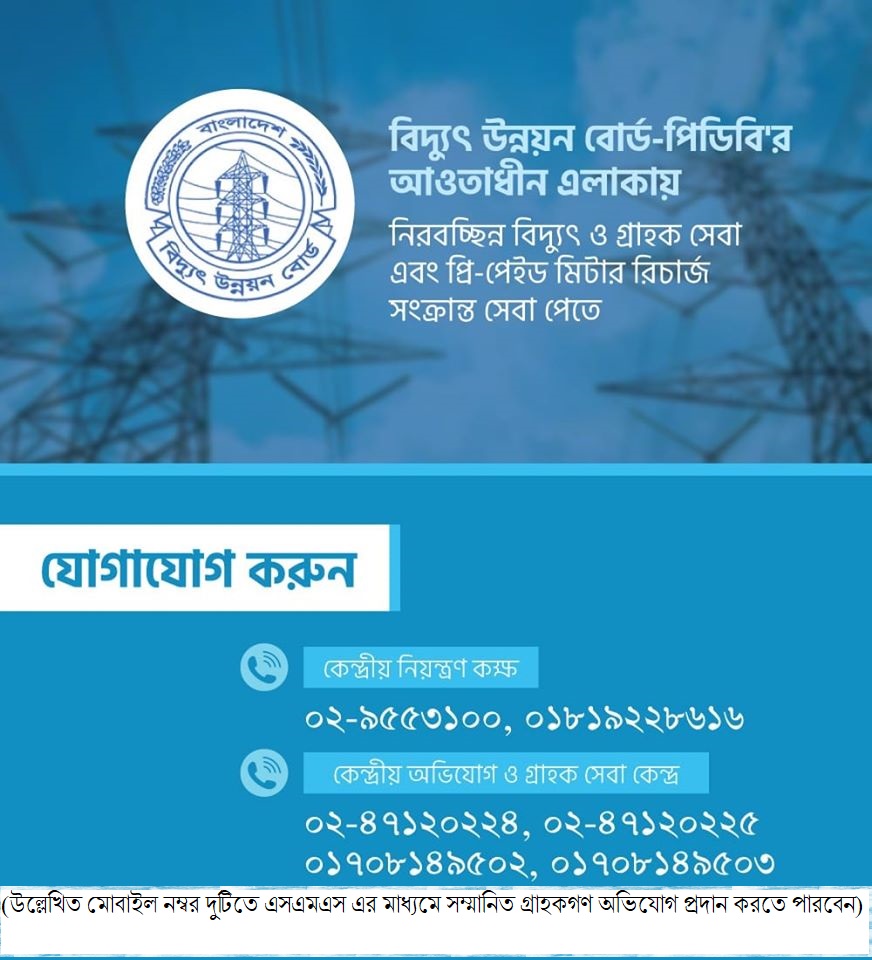মাস্টার প্লান
Generation Planning
DEMAND FORECAST:
In the Power System Master Plan (PSMP) -2010 demand forecast was made based on 7 % GDP growth rate. The electricity development is required to be accelerated to increase access and attain economic development. The desirable economic growth rate would be about 7% p.a. Based upon this study the peak demand would be about 10,283 MW in FY2015, 17,304 MW in FY2020 and 25,199 MW in 2025. According to PSMP- 2010 Study year-wise peak demand forecast is given below.
BANGLADESH POWER DEVELOPMENT BOARD
|
Fiscal Year |
Peak Demand (MW) |
|
2010 |
6,454 |
|
2011 |
6,765 |
|
2012 |
7,518 |
|
2013 |
8,349 |
|
2014 |
9,268 |
|
2015 |
10,283 |
|
2016 |
11,405 |
|
2017 |
12,644 |
|
2018 |
14,014 |
|
2019 |
15,527 |
|
2020 |
17,304 |
|
2021 |
18,838 |
|
2022 |
20,443 |
|
2023 |
21,993 |
|
2024 |
23,581 |
|
2025 |
25,199 |
|
2026 |
26,838 |
|
2027 |
28,487 |
|
2028 |
30,134 |
|
2029 |
31,873 |
|
2030 |
33,708 |
Power System Master Plan (PSMP) 2010
PSMP (Detail)
PSMP (Summary)
Generation Planning:
Generation Planning is the most important part of the power system and the reliability of the whole power system depends largely on the reliability of power generating system. The generation in the system should be such that it can supply the demand at all times under the outage of normal maintenance and forced outage. To develop generation addition sequence Power System Master Plan of 2010 used PC-based WASP (Weign Automatic System Planning Package) and PDPAT software. This software determines least-cost generation addition sequences based upon the load characteristics, schedule maintenance, forced outage, and reliability level plant cost etc. The least cost generation addition sequence includes peak and base load plants of optimum unit size. Since then BPDB has been using PC-based WASP for generation planning. Annual LOLP (LOSS-OF LOAD PROBABILITY) of 2% is being used as reliability criteria. The equivalent to about 8 days/year of LOLE (LOSS-OF-LOAD-EXPECTATION).
Indigenous natural gas, coal, nuclear, cross-border trade and hydro resources are mainly considered for generation planning as fuel. In case of generation plant sitting regional balance in generation is being given due importance. Other factors such as availability of fuel, cooling water, transportation of heavy equipment, proximately to grid network & load center etc. are also considered for plant sitting.
|
Generation Planning |
Distribution Planning |
Transmission Planning |
|
Overall Power System |
Renewable Energy |
Environment |






















